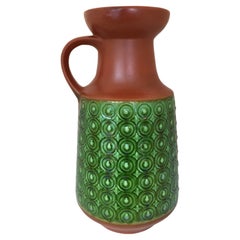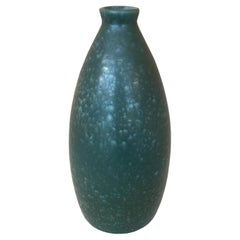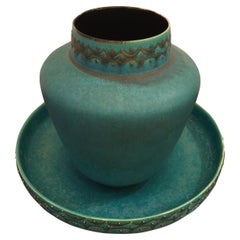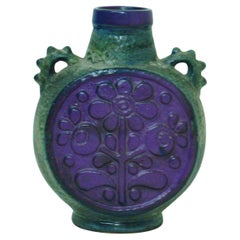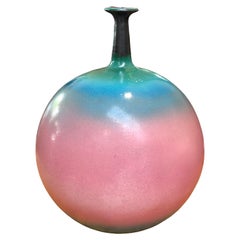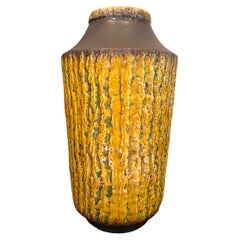Luxurydesignstore Centerpieces
to
237
4
233
87
139
7
55
7
25
41
41
40
17
6
1
108
64
58
108
103
73
59
32
1
230
107
55
47
9
237
237
237
36
7
5
1
1
Ceramic German
Located in Ciudad Autónoma Buenos Aires, C
Ceramic
We have specialized in the sale of Art Deco and Art Nouveau and Vintage styles since 1982. If you have any questions we are at your disposal.
Pushing the button that reads ...
Category
Vintage 1960s German Mid-Century Modern Centerpieces
Materials
Ceramic
$7,500
Ceramic Sign: Revernay 86 19b
Located in Ciudad Autónoma Buenos Aires, C
Ceramic Sign: Revernay 86 19b
"Around 1896, the company Sarreguemines Utzschneider et Cie created an art workshop responsible for producing Art Deco artistic ceramic.
This workshop...
Category
Vintage 1920s French Art Deco Centerpieces
Materials
Ceramic
Ceramic German
Located in Ciudad Autónoma Buenos Aires, C
Ceramic
We have specialized in the sale of Art Deco and Art Nouveau and Vintage styles since 1982. If you have any questions we are at your disposal.
Pushing the button that reads ...
Category
Vintage 1940s German Art Deco Centerpieces
Materials
Ceramic
$8,500
Ceramic 1960, German, Sign 33-25
Located in Ciudad Autónoma Buenos Aires, C
Ceramic
We have specialized in the sale of Art Deco and Art Nouveau and Vintage styles since 1982. If you have any questions we are at your disposal.
Pushing the button that reads ...
Category
Vintage 1960s German Mid-Century Modern Centerpieces
Materials
Ceramic
Ceramic Art Deco
Located in Ciudad Autónoma Buenos Aires, C
Ceramic
We have specialized in the sale of Art Deco and Art Nouveau and Vintage styles since 1982. If you have any questions we are at your disposal.
Pushing the button that reads ...
Category
Vintage 1930s German Mid-Century Modern Centerpieces
Materials
Ceramic
$16,000
Big Ceramic German
Located in Ciudad Autónoma Buenos Aires, C
Ceramic
We have specialized in the sale of Art Deco and Art Nouveau and Vintage styles since 1982. If you have any questions we are at your disposal.
Pushing the button that reads ...
Category
Vintage 1960s German Mid-Century Modern Centerpieces
Materials
Ceramic
$8,000
Ceramic German
Located in Ciudad Autónoma Buenos Aires, C
Ceramic
We have specialized in the sale of Art Deco and Art Nouveau and Vintage styles since 1982. If you have any questions we are at your disposal.
Pushing the button that reads ...
Category
Vintage 1960s German Mid-Century Modern Centerpieces
Materials
Ceramic
$6,000
German Ceramic
Located in Ciudad Autónoma Buenos Aires, C
Ceramic
We have specialized in the sale of Art Deco and Art Nouveau and Vintage styles since 1982. If you have any questions we are at your disposal.
Pushing the button that reads ...
Category
Vintage 1960s German Mid-Century Modern Centerpieces
Materials
Ceramic
$6,000
Centerpiece 1920, Art Deco
Located in Ciudad Autónoma Buenos Aires, C
Centerpiece
We have specialized in the sale of Art Deco and Art Nouveau and Vintage styles since 1982. If you have any questions we are at your disposal.
Pushing the button that...
Category
Antique Early 1900s Czech Art Deco Centerpieces
Materials
Glass
Big Pair of Candelabras, 1955, Germany
Located in Ciudad Autónoma Buenos Aires, C
Sign:
Hutschenreuther
Selb
LHS
Kunstabteilung
-------------------
Hutschenreuther
Kunstabteilung
1722/1 Selb
--------------------------------------
The Hutschenreuther porcelain fact...
Category
Vintage 1950s German Mid-Century Modern Candlesticks
Materials
Porcelain
Sculpture, 1900, Jugendstil, Art Nouveau, Liberty, France
Located in Ciudad Autónoma Buenos Aires, C
We have specialized in the sale of Art Deco and Art Nouveau and Vintage styles since 1982. If you have any questions we are at your disposal.
Pushing the button that reads 'View All...
Category
Antique Early 1900s French Art Nouveau Figurative Sculptures
Materials
Iron
Tree with Flowers Sculpture, 1900, Jugendstil, Art Nouveau, Liberty, France
Located in Ciudad Autónoma Buenos Aires, C
We have specialized in the sale of Art Deco and Art Nouveau and Vintage styles since 1982. If you have any questions we are at your disposal.
Pushing the button that reads 'View All...
Category
Antique Early 1900s French Art Nouveau Natural Specimens
Materials
Iron
Vine Tree Sculpture, 1900, Jugendstil, Art Nouveau, Liberty, France
Located in Ciudad Autónoma Buenos Aires, C
We have specialized in the sale of Art Deco and Art Nouveau and Vintage styles since 1982. If you have any questions we are at your disposal.
Pushing the button that reads 'View All...
Category
Antique Early 1900s French Art Nouveau Natural Specimens
Materials
Iron
Flower Boat Sculpture, 1900, Style: Jugendstil, Art Nouveau, Liberty
Located in Ciudad Autónoma Buenos Aires, C
We have specialized in the sale of Art Deco and Art Nouveau and Vintage styles since 1982. If you have any questions we are at your disposal.
Pushing the button that reads 'View All...
Category
Antique Early 1900s French Art Nouveau Natural Specimens
Materials
Marble
Woman Dancing Sculpture, France, Jugendstil, Art Nouveau, Liberty, 1900
Located in Ciudad Autónoma Buenos Aires, C
Sculpture
Year: 1900
Material: silver plated bronze
We have specialized in the sale of Art Deco and Art Nouveau and Vintage styles since 1982. If you have any questions we are at ...
Category
Antique Early 1900s French Art Nouveau Centerpieces
Materials
Bronze
Centerpiece, France, Jugendstil, Art Nouveau, Liberty, 1900
Located in Ciudad Autónoma Buenos Aires, C
Centerplace
In silver plated bronze
We have specialized in the sale of Art Deco and Art Nouveau and Vintage styles since 1982. If you have any questions we are at your disposal.
Push...
Category
Antique Early 1900s French Art Nouveau Centerpieces
Materials
Bronze
Visiting Card Tray, German, Jugendstil, Art Nouveau, Liberty, 1900, WMF
By WMF Württembergische Metallwarenfabrik
Located in Ciudad Autónoma Buenos Aires, C
Visiting card Tray, WMF, German
Page: 167 in the Book – Art Nouveau Domestic Metalwork from WMF Wurttembergische Metallwarenfabrik: The English Cat...
Category
Antique Early 1900s German Art Nouveau Centerpieces
Materials
Metal
Fortune's Mouth Visiting Card Tray, France, Jugendstil, Art Nouveau, Liberty
By WMF Württembergische Metallwarenfabrik
Located in Ciudad Autónoma Buenos Aires, C
Visiting card Tray, France
Sign:
Page: 167 in the Book – Art Nouveau Domestic Metalwork from WMF Wurttembergische Metallwarenfabrik: The English Ca...
Category
Antique Early 1900s French Art Nouveau Centerpieces
Materials
Metal
Pair of Plates of Doughs or Sweets, Jugendstil, Art Nouveau, Liberty, German
By WMF Württembergische Metallwarenfabrik
Located in Ciudad Autónoma Buenos Aires, C
Pair of plates of doughs or sweets, WMF, German
WMF (Wurttembergische Metallwarenfabrik)
Electro- Wurtemberg Plate Company in Geislingen, Germany, internationally known today a...
Category
Antique Early 1900s German Art Nouveau Centerpieces
Materials
Metal
Dog Visiting Card Tray, France, Jugendstil, Art Nouveau, Liberty, 1890
By WMF Württembergische Metallwarenfabrik
Located in Ciudad Autónoma Buenos Aires, C
Visiting card Tray, France
Sign:
WMF= Used from 1880 to 1925 for silver-plated Hollow-ware, and until 1930 for export articles. The Geislingen firm of Straub & Schweizer merged with...
Category
Antique 1890s French Art Nouveau Centerpieces
Materials
Metal
Boy with hen, visiting Card Tray, France, Jugendstil, Art Nouveau, Liberty, 1900
By WMF Württembergische Metallwarenfabrik
Located in Ciudad Autónoma Buenos Aires, C
Visiting card Tray, France
Sign:
WMF= Used from 1880 to 1925 for silver-plated Hollow-ware, and until 1930 for export articles. The Geislingen firm of Straub & Schweizer merged with...
Category
Antique Early 1900s French Art Nouveau Centerpieces
Materials
Metal
Visiting Card Tray, German, Jugendstil, Art Nouveau, Liberty, 1900, WMF
By WMF Württembergische Metallwarenfabrik
Located in Ciudad Autónoma Buenos Aires, C
Visiting card Tray, WMF, German
WMF (Wurttembergische Metallwarenfabrik)
Electro- Wurtemberg Plate Company in Geislingen, Germany, internationally ...
Category
Antique Early 1900s German Art Nouveau Centerpieces
Materials
Metal
Sweet and Fruit Dishes, Jugendstil, Art Nouveau, Liberty, 1900, Sign WMF, German
By WMF Württembergische Metallwarenfabrik
Located in Ciudad Autónoma Buenos Aires, C
Double fruit or Sweet dish, Centerplace, WMF, German
Firms:
Page: 342 in the Book – Art Nouveau Domestic Metalwork from WMF Wurttembergische Metallwarenfabrik: The English Catalogue...
Category
Antique Early 1900s German Art Nouveau Centerpieces
Materials
Metal
Sweet and Fruit Dishes, German, Jugendstil, Art Nouveau, Liberty, 1900, Sign WMF
By WMF Württembergische Metallwarenfabrik
Located in Ciudad Autónoma Buenos Aires, C
Double fruit or Sweet dish, Centerplace, WMF, German
Page: 342 in the Book – Art Nouveau Domestic Metalwork from WMF Wurttembergische Metallwarenfabrik: The English Catalogue 1906 H...
Category
Antique Early 1900s German Art Nouveau Centerpieces
Materials
Metal
Visiting Card Tray, German, Jugendstil, Art Nouveau, Liberty, 1900
By WMF Württembergische Metallwarenfabrik
Located in Ciudad Autónoma Buenos Aires, C
Visiting card tray, WMF, German
WMF (Wurttembergische Metallwarenfabrik)
Electro- Wurtemberg Plate Company in Geislingen, Germany, internation...
Category
Antique Early 1900s German Art Nouveau Centerpieces
Materials
Metal
Visiting Card Tray, France, Jugendstil, Art Nouveau, Liberty, 1900
Located in Ciudad Autónoma Buenos Aires, C
Visiting card Tray, France
We have specialized in the sale of Art Deco and Art Nouveau and Vintage styles since 1982. If you have any questions w...
Category
Antique Early 1900s French Art Nouveau Centerpieces
Materials
Metal
Visiting card Tray, German, Jugendstil, Art Nouveau, Liberty, 1911, WMF
By WMF Württembergische Metallwarenfabrik
Located in Ciudad Autónoma Buenos Aires, C
Visiting card Tray, WMF, German
WMF (Wurttembergische Metallwarenfabrik)
Electro- Wurtemberg Plate Company in Geislingen, Germany, internation...
Category
Vintage 1910s German Art Nouveau Centerpieces
Materials
Metal
Visiting Card Tray, German, Jugendstil, Art Nouveau, Liberty, 1911, Sign, WMF
By WMF Württembergische Metallwarenfabrik
Located in Ciudad Autónoma Buenos Aires, C
Visiting card Tray, WMF, German
Sign:
WMF G: Introduces on the 1 st June 1910, in the interests of improved legibility, especially of the very small marks. The company´s choice o...
Category
Vintage 1910s German Art Nouveau Centerpieces
Materials
Metal
Double Fruit or Sweet Dish, German, Jugendstil, Art Nouveau, Liberty, 1900
By WMF Württembergische Metallwarenfabrik
Located in Ciudad Autónoma Buenos Aires, C
Double fruit or Sweet dish, Centerplace, WMF, German
Page: 51 in the Book – Art Nouveau Domestic Metalwork from WMF Wurttembergische Metallwarenfabrik: The...
Category
Antique Early 1900s German Art Nouveau Centerpieces
Materials
Metal
Big Visiting card Tray, German, Jugendstil, Art Nouveau, Liberty, 1900, WMF
By WMF Württembergische Metallwarenfabrik
Located in Ciudad Autónoma Buenos Aires, C
Pair of visiting card trays, WMF, German
Page: 170 in the Book – Art Nouveau Domestic Metalwork from WMF Wurttembergische Metallwarenfabrik: The English Catalogue 1906 Hardcover.
WM...
Category
Antique Early 1900s German Art Nouveau Centerpieces
Materials
Metal
Visiting Card Tray, France, Jugendstil, Art Nouveau, Liberty, 1900
Located in Ciudad Autónoma Buenos Aires, C
Visiting card Tray, France
We have specialized in the sale of Art Deco and Art Nouveau and Vintage styles since 1982. If you have any questions w...
Category
Antique Early 1900s French Art Nouveau Centerpieces
Materials
Metal
Visiting card Tray, German, Jugendstil, Art Nouveau, Liberty, 1900, WMF
By WMF Württembergische Metallwarenfabrik
Located in Ciudad Autónoma Buenos Aires, C
Visiting card Tray, WMF, German
WMF (Wurttembergische Metallwarenfabrik)
Electro- Wurtemberg Plate Company in Geislingen, Germany, internation...
Category
Antique Early 1900s German Art Nouveau Centerpieces
Materials
Metal
Visiting Card Tray, German, Jugendstil, Art Nouveau, Liberty, 1900, WMF
By WMF Württembergische Metallwarenfabrik
Located in Ciudad Autónoma Buenos Aires, C
Double fruit or Sweet dish, Centerplace, WMF, German
Page 173: in the Book – Art Nouveau Domestic Metalwork from WMF Wurttembergische Metallwarenfabrik: The English Catalogue 1906 H...
Category
Antique Early 1900s German Art Nouveau Centerpieces
Materials
Metal
Wedding Ring Holder, German, Jugendstil, Art Nouveau, Liberty, 1900, WMF
By WMF Württembergische Metallwarenfabrik
Located in Ciudad Autónoma Buenos Aires, C
Centerplace, WMF, German
WMF (Wurttembergische Metallwarenfabrik)
Electro- Wurtemberg Plate Company in Geislingen, Germany, internationally known today as 'WMF' initials of the...
Category
Antique Early 1900s German Art Nouveau Centerpieces
Materials
Metal
Centerpiece, German, Jugendstil, Art Nouveau, Liberty, 1900, WMF
By WMF Württembergische Metallwarenfabrik
Located in Ciudad Autónoma Buenos Aires, C
Centerplace, WMF, German
WMF (Wurttembergische Metallwarenfabrik)
Electro- Wurtemberg Plate Company in Geislingen, Germany, internationally known today as 'WMF' initials of the...
Category
Antique Early 1900s German Art Nouveau Centerpieces
Materials
Metal
Centerplace, France, Jugendstil, Art Nouveau, Liberty, 1900, Sign: L. Alliot
Located in Ciudad Autónoma Buenos Aires, C
Centerplace,
Year: 1900
Firms:
L. Alliot
We have specialized in the sale of Art Deco and Art Nouveau and Vintage styles since 1982. If you have any questions we are at your disp...
Category
Antique Early 1900s French Art Nouveau Centerpieces
Materials
Metal
Centerplace, German, Jugendstil, Art Nouveau, Liberty, 1898, Sign: Orivit 2638
By Orivit
Located in Ciudad Autónoma Buenos Aires, C
Centerplace, orivit, German
Year: 1898
Firms:
Orivit 2638 = Signature name with its numbering.
Casa Costa = Name of the house that sold it in Argentina.
Orivit
The company was...
Category
Antique 1890s German Art Nouveau Centerpieces
Materials
Metal
Double Fruit or Sweet Dish, German, Jugendstil, Art Nouveau, Liberty, 1900, WMF
By WMF Württembergische Metallwarenfabrik
Located in Ciudad Autónoma Buenos Aires, C
Double fruit or Sweet dish, Centerplace, WMF, German
Page: 342 in the Book – Art Nouveau Domestic Metalwork from WMF Wurttembergische Metallwarenfabrik: The English Catalogue 1906 H...
Category
Antique Early 1900s German Art Nouveau Centerpieces
Materials
Metal
Centerpiece, Jugendstil, Art Nouveau, France, 1900
Located in Ciudad Autónoma Buenos Aires, C
Centerplace
Metal: Silver plated and crystal
We have specialized in the sale of Art Deco and Art Nouveau and Vintage styles since 1982. If you have any questions we are at your d...
Category
Antique Early 1900s French Art Nouveau Centerpieces
Materials
Metal
Vases, Jugendstil, Art Nouveau, Liberty, German, 1910, WMF
By WMF Württembergische Metallwarenfabrik
Located in Ciudad Autónoma Buenos Aires, C
Centerplace, WMF, German
We have specialized in the sale of Art Deco and Art Nouveau and Vintage styles since 1982. If you have any questions we are at your disposal.
Pushing the...
Category
Vintage 1910s German Art Nouveau Vases
Materials
Metal
Centerpiece, German, Jugendstil, Art Nouveau, Liberty, 1900
By WMF Württembergische Metallwarenfabrik
Located in Ciudad Autónoma Buenos Aires, C
Centerplace, WMF, German
Firms:
WMF G with ostrich = The first WMF impressed mark, used from 1880 to 1925 for silver-plated Hollow-ware, and until 1930 for export articles. The G...
Category
Antique Early 1900s German Art Nouveau Centerpieces
Materials
Crystal, Metal
Centerpiece, Jugendstil, Art Nouveau, France, 1900, Sign: Christofle
By Christofle
Located in Ciudad Autónoma Buenos Aires, C
Centerplace, Sign: Christofle
Metal: Silver plated
We have specialized in the sale of Art Deco and Art Nouveau and Vintage styles since 1982. If you have any questions we are at...
Category
Antique Early 1900s French Art Nouveau Centerpieces
Materials
Metal
Centerpiece, Jugendstil, Art Nouveau, Liberty, German, 1910
By WMF Württembergische Metallwarenfabrik
Located in Ciudad Autónoma Buenos Aires, C
Centerplace, wmf, German
We have specialized in the sale of Art Deco and Art Nouveau and Vintage styles since 1982. If you have any questions we are at your disposal.
Pushing the...
Category
Vintage 1910s German Art Nouveau Centerpieces
Materials
Crystal, Metal
Centerpiece, Art Nouveau, Liberty, German, 1910, WMF
By WMF Württembergische Metallwarenfabrik
Located in Ciudad Autónoma Buenos Aires, C
Centerplace, WMF
We have specialized in the sale of Art Deco and Art Nouveau and Vintage styles since 1982.If you have any questions we are at your disposal.
Pushing the button t...
Category
Vintage 1910s German Art Nouveau Centerpieces
Materials
Crystal, Metal
Centerpiece, Jugendstil, Art Nouveau, Liberty, France, 1900
Located in Ciudad Autónoma Buenos Aires, C
Centerplace
Silverplated
We have specialized in the sale of Art Deco and Art Nouveau and Vintage styles since 1982. If you have any questions we are at your disposal.
Pushing th...
Category
Antique Early 1900s French Art Nouveau Centerpieces
Materials
Metal
Centerpiece, Jugendstil, Art Nouveau, France, 1900, Sign: Christofle N: 2364323
By Christofle
Located in Ciudad Autónoma Buenos Aires, C
Centerplace, Sign: Christofle n: 2364323
Metal: Silver plated
We have specialized in the sale of Art Deco and Art Nouveau and Vintage styles since 1982. If you have any questions...
Category
Antique Early 1900s French Art Nouveau Centerpieces
Materials
Metal
Centerpiece, Jugendstil, Art Nouveau, France, 1855, Sign: Christofle N: 1286382
By Christofle
Located in Ciudad Autónoma Buenos Aires, C
Centerplace, Sign: Christofle n: 1286382
Book: 150 Ans D´orfévrerie
Christofle silversmith since 1830
page: 60
Author: Henri Bouilhet
Metal: Silver plated
We have specialized in th...
Category
Antique 1850s French Art Nouveau Centerpieces
Materials
Metal
Centerpiece, Art Nouveau, Liberty, German, 1910, Sign: WMF 334
By WMF Württembergische Metallwarenfabrik
Located in Ciudad Autónoma Buenos Aires, C
Centerplace, wmf, German
Firms:
WMF G: The so-called “bee-hive” mark was introduced on the 1st July 1909 at the express wish of the French customs authorities: all WMF articles, ...
Category
Vintage 1910s German Art Nouveau Centerpieces
Materials
Crystal, Metal
Centerpiece , Jugendstil, Art Nouveau, Liberty, German, 1900, Kayser
By Kayser Germany
Located in Ciudad Autónoma Buenos Aires, C
Centerplace, Kayser, German
We have specialized in the sale of Art Deco and Art Nouveau and Vintage styles since 1982. If you have any questions we are at your disposal.
Pushing ...
Category
Antique Early 1900s German Art Nouveau Centerpieces
Materials
Crystal, Metal
Centerpiece, Jugendstil, Art Nouveau, Liberty, German, 1900, WMF
By WMF Württembergische Metallwarenfabrik
Located in Ciudad Autónoma Buenos Aires, C
Centerplace, wmf, German
We have specialized in the sale of Art Deco and Art Nouveau and Vintage styles since 1982.If you have any questions we are at your disposal.
Pushing the ...
Category
Antique Early 1900s German Art Nouveau Centerpieces
Materials
Crystal, Metal
Big Murano, 1920, Italian
Located in Ciudad Autónoma Buenos Aires, C
Murano
We have specialized in the sale of Art Deco and Art Nouveau and Vintage styles since 1982. If you have any questions we are at your disposal.
Pushing the button that reads 'View All From Seller'. And you can see more objects to the style for sale.
Why are there so many antiques in Argentina?
In the 1880 – 1940 there was a grate wave of immigration encouraged by the periods of war that were taking place.
1st World War took place between 1914 and 1918
2nd World War took place between 1939 and 1945
The immigrants options were New York or Buenos Aires. Tickets were cheap and in Buenos Aires they were welcomed with open arms, as it was a country where everything was still to be done.
Argentina was the country of new opportunities, labour was needed and religious freedom was assured, in many cases the of the family travel first until they were settled and then the rest of the family members join them.
In the immigrant museum “Ellis Island Immigrant Building” in New York you can se the promotional posters of the boats that would take them to a new life.
Between the years 1895 and 1896, Argentina had the highest DGP (gross domestic product) per capita in the world according to the Maddison Historical Statistics index, this situation arose due to the large amount of food being exported to European countries, which were at war.
The Argentinean ships left the port of Buenos Aires with food, but they returned with furniture, clothes and construction elements, (it´s common to see this the old buildings of the historic neighbourhood of San Telmo, the beams with the inscription “Made in England)”, as well as many markets that were built in Buenos Aires, such us the San Telmo Market, whose structure was brought by ship and afterwards assembled in 900 Defensa Street.
With the great influence of European immigrants living in the country, the children of the upper classes travelled to study in France, resulting in the inauguration of “La Maison Argentinienne”, on 27th of June 1928, in the international city of Paris, which hosted many Argentinians that were studying in Frace.
It´s the fourth house to be built after France, Canada and Belgium, being the first Spanish-speaking one. Still in place today (17 Bd Jourdan, 75014, Paris, France). Many of the children of these wealthy families who attended international art exhibitions, museums and art courses abroad, took a keen interest in the European style. This is why Buenos Aires was at the time referred as “The Paris of South America”.
Between the years 1890 and 1920 more than a hundred Palaces were built on Alvear Avenue the most exclusive avenue in Buenos Aires. Today some of these palaces have been transformed into museums, hotels and embassies.
In the year 1936, the Kavanagh building was inaugurated, it was the tallest reinforced concrete building in South America.
During 1994 the American Society of Civil Engineers distinguished it as an “international engineering milestone”, and it´s now considered a World Heritage of Modern Architecture.
At the time was common to hire foreign architects such as Le Corbusier, who visited Buenos Aires/Argentina in 1929 and in 1948 he drew up the blueprints for a house built in La Plata City (which was declared a World Heritage Site).
In 1947, the Hungarian architect Marcelo Breuer designed “Parador Ariston” in the seaside city of Mar del Plata. After an Argentinean student at Harvard University convinced him to come to Argentina. He worked on an urban development project in the Casa Amarilla, area of La Boca.
The Ukrainian architect, Vladimiro Acosta, arrives in Argentina in 1928 and worked as an architect until que moved to Brazil.
Antonio Bonet, a Spanish architect who worked with Le Corbusier in Paris, arrives in Argentina in 1937, where he carried out several architectural works and in 1938 designs the well-known BFK chair.
Andres Kálnay, of Hungarian origin, made around 120 architectural masterpieces, among which the former Munich brewery stands out, he even made the furniture’s design.
The German architect, Walter Gropius, director of the Bauhaus, lived in Argentina, where he wrote articles for “Sur” magazine and founded in Buenos Aires, an architectural firm with Franz Möller, who was also an architect, where he built two houses.
At the same time several famous designers decided to immigrate to Argentina, among them we can find the well-known French designer, Jean-Michel Frank, who arrived in the country in 1940 and also worked for the Rockefeller family.
Special pieces were made, which were sold exclusively in the country, such as the well-known German company “WMF”, who sold their products by catalogue, which were chosen by the ladies of High Society in the list of wedding gifts, as well as the pieces designed by Christofle.
The Swiss sculptor Alberto Giacometti, made special pieces for Argentinean mansions.
In 1904 the first Jansen branch outside Paris was established in Buenos Aires, as the Argentinean clientele demanded a large amount of furniture, from the end of the 19th century to the mid-20th century.
In 1970, the brand Rigolleau Argentina made pieces authorised by Lalique.
The brands Maple and Thompson also set up shop in the country.
The French plastic artist, Marcel Duchamp moved to Argentina in 1918-1919.
Glass signed Gallé, Charder, Leverre, Schneider, Muller and other French firms. They were bought in flower shops and were given to ladies with beautiful floral arrangements.
Some furniture manufacturers travelled to international fairs and bough the patterns to produce the furniture in Argentina, such as the furniture firm Englander and Bonta, who bought the patterns ins Italy.
It is worth mentioning that in Argentina we have the largest Community of Italians outside...
Category
Vintage 1920s Italian Art Deco Vases
Materials
Murano Glass
Murano, 1920, Italian
Located in Ciudad Autónoma Buenos Aires, C
Murano
We have specialized in the sale of Art Deco and Art Nouveau and Vintage styles since 1982. If you have any questions we are at your disposal.
Pushing the button that reads 'View All From Seller'. And you can see more objects to the style for sale.
Why are there so many antiques in Argentina?
In the 1880 – 1940 there was a grate wave of immigration encouraged by the periods of war that were taking place.
1st World War took place between 1914 and 1918
2nd World War took place between 1939 and 1945
The immigrants options were New York or Buenos Aires. Tickets were cheap and in Buenos Aires they were welcomed with open arms, as it was a country where everything was still to be done.
Argentina was the country of new opportunities, labour was needed and religious freedom was assured, in many cases the of the family travel first until they were settled and then the rest of the family members join them.
In the immigrant museum “Ellis Island Immigrant Building” in New York you can se the promotional posters of the boats that would take them to a new life.
Between the years 1895 and 1896, Argentina had the highest DGP (gross domestic product) per capita in the world according to the Maddison Historical Statistics index, this situation arose due to the large amount of food being exported to European countries, which were at war.
The Argentinean ships left the port of Buenos Aires with food, but they returned with furniture, clothes and construction elements, (it´s common to see this the old buildings of the historic neighbourhood of San Telmo, the beams with the inscription “Made in England)”, as well as many markets that were built in Buenos Aires, such us the San Telmo Market, whose structure was brought by ship and afterwards assembled in 900 Defensa Street.
With the great influence of European immigrants living in the country, the children of the upper classes travelled to study in France, resulting in the inauguration of “La Maison Argentinienne”, on 27th of June 1928, in the international city of Paris, which hosted many Argentinians that were studying in Frace.
It´s the fourth house to be built after France, Canada and Belgium, being the first Spanish-speaking one. Still in place today (17 Bd Jourdan, 75014, Paris, France). Many of the children of these wealthy families who attended international art exhibitions, museums and art courses abroad, took a keen interest in the European style. This is why Buenos Aires was at the time referred as “The Paris of South America”.
Between the years 1890 and 1920 more than a hundred Palaces were built on Alvear Avenue the most exclusive avenue in Buenos Aires. Today some of these palaces have been transformed into museums, hotels and embassies.
In the year 1936, the Kavanagh building was inaugurated, it was the tallest reinforced concrete building in South America.
During 1994 the American Society of Civil Engineers distinguished it as an “international engineering milestone”, and it´s now considered a World Heritage of Modern Architecture.
At the time was common to hire foreign architects such as Le Corbusier, who visited Buenos Aires/Argentina in 1929 and in 1948 he drew up the blueprints for a house built in La Plata City (which was declared a World Heritage Site).
In 1947, the Hungarian architect Marcelo Breuer designed “Parador Ariston” in the seaside city of Mar del Plata. After an Argentinean student at Harvard University convinced him to come to Argentina. He worked on an urban development project in the Casa Amarilla, area of La Boca.
The Ukrainian architect, Vladimiro Acosta, arrives in Argentina in 1928 and worked as an architect until que moved to Brazil.
Antonio Bonet, a Spanish architect who worked with Le Corbusier in Paris, arrives in Argentina in 1937, where he carried out several architectural works and in 1938 designs the well-known BFK chair.
Andres Kálnay, of Hungarian origin, made around 120 architectural masterpieces, among which the former Munich brewery stands out, he even made the furniture’s design.
The German architect, Walter Gropius, director of the Bauhaus, lived in Argentina, where he wrote articles for “Sur” magazine and founded in Buenos Aires, an architectural firm with Franz Möller, who was also an architect, where he built two houses.
At the same time several famous designers decided to immigrate to Argentina, among them we can find the well-known French designer, Jean-Michel Frank, who arrived in the country in 1940 and also worked for the Rockefeller family.
Special pieces were made, which were sold exclusively in the country, such as the well-known German company “WMF”, who sold their products by catalogue, which were chosen by the ladies of high society in the list of wedding gifts, as well as the pieces designed by Christofle.
The Swiss sculptor Alberto Giacometti, made special pieces for Argentinean mansions.
In 1904 the first Jansen branch outside Paris was established in Buenos Aires, as the Argentinean clientele demanded a large amount of furniture, from the end of the 19th century to the mid-20th century.
In 1970, the brand Rigolleau Argentina made pieces authorised by Lalique.
The brands Maple and Thompson also set up shop in the country.
The French plastic artist, Marcel Duchamp moved to Argentina in 1918-1919.
Glass signed Gallé, Charder, Leverre, Schneider, Muller and other French firms. They were bought in flower shops and were given to ladies with beautiful floral arrangements.
Some furniture manufacturers travelled to international fairs and bough the patterns to produce the furniture in Argentina, such as the furniture firm Englander and Bonta, who bought the patterns ins Italy.
It is worth mentioning that in Argentina we have the largest community of Italians outside...
Category
Vintage 1920s Italian Art Deco Vases
Materials
Murano Glass
$6,200
1930, Italian Murano, Medida
Located in Ciudad Autónoma Buenos Aires, C
Murano
We have specialized in the sale of Art Deco and Art Nouveau and Vintage styles since 1982. If you have any questions we are at your disposal.
Pushing the button that reads 'Vi...
Category
Vintage 1930s Italian Art Deco Centerpieces
Materials
Murano Glass
1930, Italian Murano, Medida
Located in Ciudad Autónoma Buenos Aires, C
Murano
We have specialized in the sale of Art Deco and Art Nouveau and Vintage styles since 1982. If you have any questions we are at your disposal.
Pushing the button that reads 'Vi...
Category
Vintage 1930s Italian Art Deco Centerpieces
Materials
Murano Glass
1930, Italian Murano
Located in Ciudad Autónoma Buenos Aires, C
Murano
We have specialized in the sale of Art Deco and Art Nouveau and Vintage styles since 1982. If you have any questions we are at your disposal.
Pushing the button that reads 'Vi...
Category
Vintage 1930s Italian Art Deco Centerpieces
Materials
Murano Glass
$1,400
Murano, 1930, Italian. Attributed to Carlo Scarpa
By Carlo Scarpa
Located in Ciudad Autónoma Buenos Aires, C
Murano
Attributed to Carlo Scarpa
We have specialized in the sale of Art Deco and Art Nouveau and Vintage styles since 1982. If you have any questions we are at your disposal.
Pushi...
Category
Vintage 1930s Italian Art Deco Centerpieces
Materials
Murano Glass
Murano and gold, Italian, Attributed to, Seguso Barovier, 1930
By Barovier Seguso & Ferro
Located in Ciudad Autónoma Buenos Aires, C
Murano
We have specialized in the sale of Art Deco and Art Nouveau and Vintage styles since 1982. If you have any questions we are at your disposal.
Pushing the button that reads 'View All From Seller'. And you can see more objects to the style for sale.
The history of "Seguso Vetri D' Arte" is directly linked to the "Vetreria Artistica Barovier" company. When the Barovier workshop was forced to reduce production in 1929, due to a financial crisis in America, the
original group of ten partners had to separate and Antonio Seguso in 1931, assisted by his sons Ernesto and Archimede opened a small workshop of his own. They were joined by Luigi Olimpio Ferro and Napoleone Barovier the following year. Together the craftsmen establish the "Artistica Soffieria e Vetreria Barovier Seguso & Ferro" company as equal partners.
In 1934 Flavio Poli joins the firm as artistic director and within only a brief period of time a distinct style of designs emerged. The close collaboration between Flavio Poli, Archimede Seguso and Alfredo Barbini played an important part in the success of the company. New glass techniques are developed which include never before seen color applications.
The companies innovative designs constantly received awards and during the 1935 World Fair in Brussels and the 1936 Milan Triennale they did attract the interest of a new group of clientele. One of them is the French wholesale company "Veronese" from Paris which would play a defining role in the history of the company.
The demand for an increase in production requires additional investments and the partners felt that there is a need to multiply their investment tenfold.
Luigi Olimpio Ferro subsequently decided to withdraw from the company and his shares are acquired by Flavio Poli, which makes him a full partner. As a result, the company name is changed to Seguso Vetri D’ Arte and it is officially recognized in 1937. A period of great success and prosperity ensues, lasting until the outbreak of World War II.
The post war period is a time of great change in Europe and the rebuilding of the economical structure in Italy requires major investments which result in the introduction of new import duties and taxes.
To safeguard the copyright of the Seguso Vetri D'Arte designs an application for a second entry into the commercial registers of Venice is made by the partners in 1945.
Strict export regulations curb international business relations for many years after the war and the company decides to focus on the domestic market instead. In 1946 a large retail location is opened at the Piazza Diaz in Milan where in addition to the art glass, German porcelain and Italian pottery is offered.
In 1950 Flavio Poli develops a new sommerso glass technique, which consists of an overlaying of transparent layers of glass. The overlapping creates new shades of color which prior to the introduction of this technique had not been seen. Flavio Poli's most iconic design is the "Valve", which resembles an upright, slightly opened clam shell. The design was introduced in 1951. Mario Pinzoni joins the company in 1953 as a personal assistant to Flavio Poli and his responsibilities as a draftsman included the compilation of archival and the existing production drawing s...
Category
Vintage 1930s Italian Art Deco Ashtrays
Materials
Gold
3 Muranos, 1930, Italian.
Located in Ciudad Autónoma Buenos Aires, C
Murano
We have specialized in the sale of Art Deco and Art Nouveau and Vintage styles since 1982. If you have any questions we are at your disposal.
Pushing the button that reads 'Vi...
Category
Vintage 1930s Italian Art Deco Vases
Materials
Murano Glass
Murano 1940, Attributed to Flavio Poli, Italian
By Flavio Poli
Located in Ciudad Autónoma Buenos Aires, C
Murano
We have specialized in the sale of Art Deco and Art Nouveau and Vintage styles since 1982. If you have any questions we are at your disposal.
Pushing the button that reads 'V...
Category
Vintage 1940s Italian Art Deco Centerpieces
Materials
Murano Glass
Murano, 1930, Italian. Attributed to Alfredo Barbini
By Alfredo Barbini
Located in Ciudad Autónoma Buenos Aires, C
Murano
We have specialized in the sale of Art Deco and Art Nouveau and Vintage styles since 1982. If you have any questions we are at your disposal.
Pushing the button that reads 'V...
Category
Vintage 1930s Italian Mid-Century Modern Centerpieces
Materials
Murano Glass
